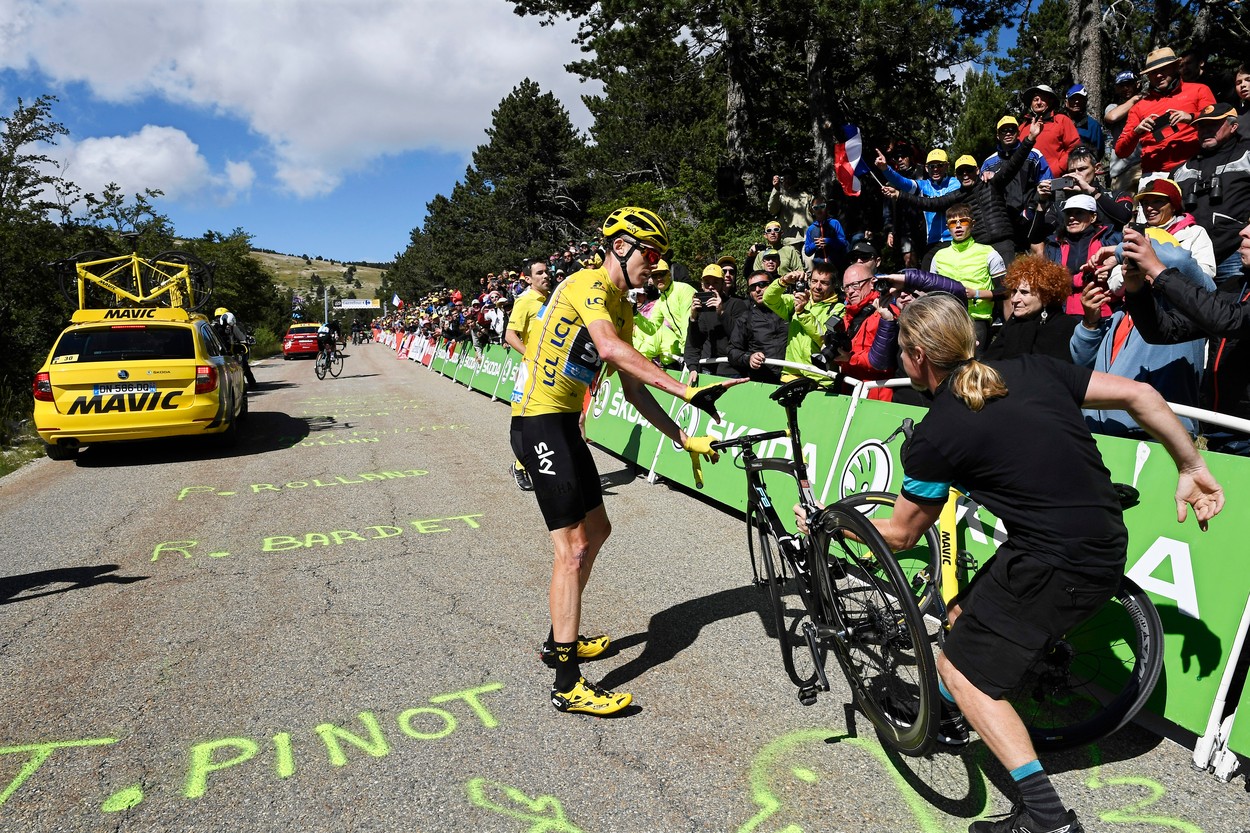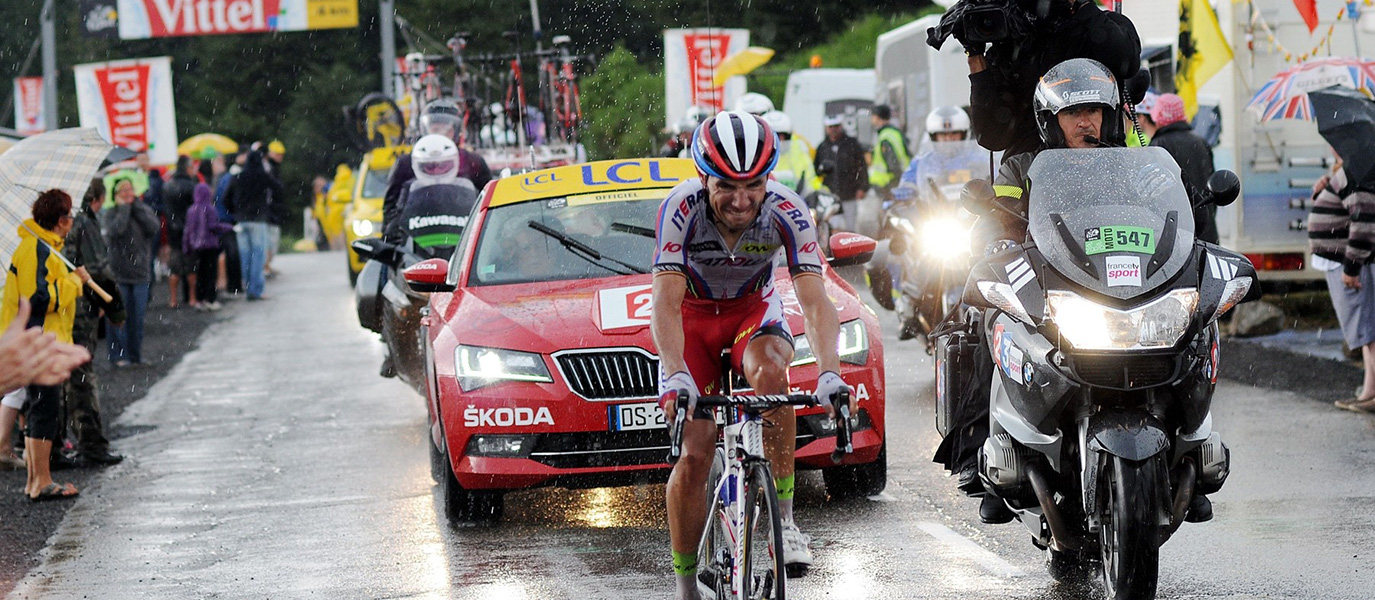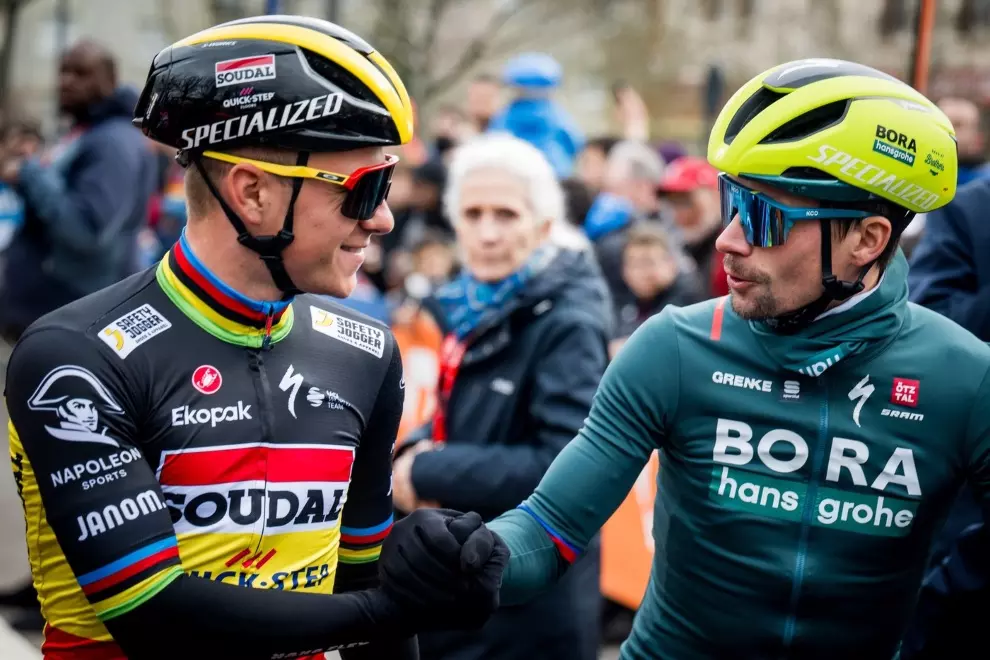The Race Director’s Red Car
No die-hard Tour fan can mistake this shade of brilliant red. Škoda’s flagship model, the SUPERB, underwent a series of unique adjustments to become a headquarters on wheels. Christian Prudhomme, the Tour’s director, calls it his home for the duration of the race, three weeks to be exact, and it’s been furnished as such. The exterior bears custom-made decals, roof and bonnet attachments, and an unconventionally large sunroof. Mr Prudhomme uses this to greet the fans and riders and, most importantly, starts each stage of the race by waving a flag at “Kilometre Zero”. This honour sometimes falls on his VIP guests, who then enjoy chilled champagne from a built-in fridge and custom-built champagne flute holders. Most importantly, the Red Car boasts a specific communication system that the director uses to control every aspect and flow of each stage.
Mavic Yellow Support Fleet
With a race this huge, there’s a myriad of opportunities for mechanical failures or crashes and that’s when the yellow fleet comes to your rescue. Donning an optimistic paint job to make them stand out and large MAVIC decals, each rider knows that these four-wheeled workshops are here to help. Usually OCTAVIAs and SUPERBs, these cars are packed with spare tyres, chains, and cranksets, as well as, food and drinks for the riders and spare kits that include raincoats, for when the weather gets awry. There are also entire tool kits and fully assembled bikes on the roof, sometimes up to eight frames. MAVIC yellow cars provide support and counselling if the team’s own cars are too far away, for example, when the stage spreads out or otherwise engaged.

Designated Team Cars
Apart from MAVIC neutral support vehicles, there are two cars per team that follow the peloton. The position of these cars in the race is determined by the ranking of each team’s leading rider. Almost all drivers (even the MAVIC ones) are former pro cyclists because of their natural understanding of the intricacies of moving and weaving among a crowd on two wheels. Reaching a rider in trouble is difficult and understanding the peloton dynamics is key to get to them in time because every second matters, with both injuries and general classification points.
The race director’s Red Car keeps the movement and positions of both the MAVIC and the team vehicles in check via the aforementioned state-of-the-art built-in communication system. Communication between cars is critical, as breakaways and crashes need to be reported so that permission can be granted for the support cars to break ranks and move up or down the race as needed.





